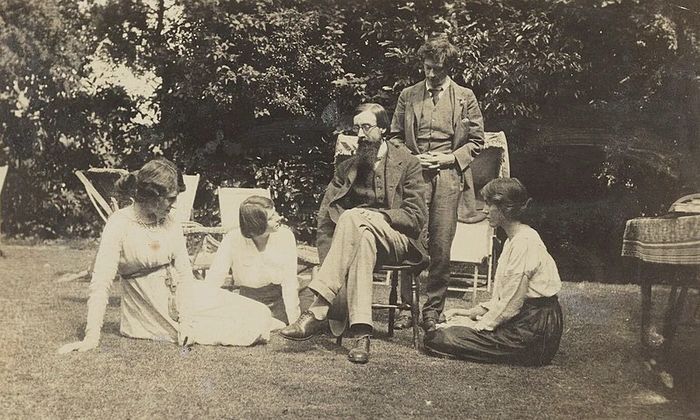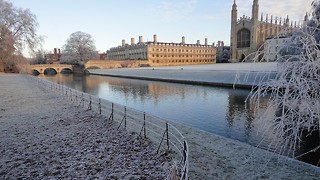The forgotten women of the Beat Generation
Millie Jeffery explores the work of the female Beat generation writers and asks why it is that they’ve been overlooked for so long

In hindsight, the allure of the Beat Generation to a twenty year old fresh out of her first year at Cambridge may have been somewhat easy to predict. Train bound to Amsterdam, equipped with Kerouac’s On The Road and Ginsberg’s Howl, I settled into a summer filled with the writings of those drug-fuelled bohemian revolutionaries. Burroughs, Corso, Snyder, Huncke – I grew to love the wild, psychedelic rhythms and spacings of their poetry, though I think now that even Beat Generation die-hards would agree that some of their writing amounts to little more than puffed up air, and it is often how the Beat writers lived, rather than how they wrote, that is most interesting.
Despite this, I quickly felt something missing from the Beats’ manifesto of sexually liberated, non-conforming, anti-capitalist behaviours – women.
Portrayals of women in Kerouac’s or Burroughs’ prose were flat, one-dimensional and traditional, not to mention incredibly rare. Contrasted with the spontaneous, surrealist, modern characters of men, the Beats’ fictional women were absent anchors; they existed purely in domestic and sexual spaces, raising children in the wings while their disloyal partners careened around the US in stolen cars. A common phrase describing the women who wrote and lived alongside the male Beats was “girls who wore black”, a phrase that encapsulates the Beat mindset that women existed merely as aesthetic decoration, so “cool” and silent as to barely even be there.
“Despite this, I quickly felt something missing from the Beats’ manifesto of sexually liberated, non-conforming, anti-capitalist behaviours – women.”
Of course, this wasn’t enough of an answer for me. And it wasn’t the truth, either. Unsurprisingly, the currently established canon of ‘Beat’ writers doesn’t include many female writers. This is not because they didn’t exist, or weren’t good enough (an idea Ginsberg himself put forward), but because they were ignored. Female Beat writers such as Elise Cowen, Sandra Hochman, Hettie Jones, Lenore Kandel, and Joyce Johnson all wrote and lived just as excitingly and artistically as Beat literary ‘giants’ of Kerouac, Ginsberg, and Burroughs. Later influencing popular artists like Patti Smith and Hedwig Gorski, these writers engaged in literary experimentation and hybridism, their confessional poetry often challenging misogynistic assumptions made by both critics and by their male counterparts.
In spite of all this, to me at least, there is an obvious gaping hole in American literary criticism where these women should be. These women arguably anticipated second wave feminism, yet even Diane di Prima, one of the most prominent female Beat writers, despite writing over 30 books, contributing to over 300 literary journals, and being translated into 13 different languages, currently only has one book of literary criticism devoted to her writing. Whenever female Beat writers are mentioned in Beat literary criticism, it is almost always limited to a paragraph of few lines, detailing their roles in the lives of male writers; as wives, girlfriends, lovers and muses. Excluding recent work done by writers Richard Peabody, Brenda Knight, Nancy Grace and Ronna Johnson, female Beat writers have largely been reduced to a footnote in the lives of male Beats.
“There is an obvious gaping hole in American literary criticism where these women should be”
So, obviously, as the angry feminist (and English student) I am, I chose to write a second year dissertation on the writings of three Beat women; Diane di Prima, Elise Cowen, and Sandra Hochman, whose poetry I cannot recommend enough. They’re not perfect and their writing is often subversive and angry, emphasising filth, beds, and bodily fluids, but I found so much excitement and empathy in their words. A genuine surprise to me was the reaction of my supervisor, who, in our one-on-one sessions, made comments on Diane di Prima’s appearance and told me to be ‘economical’ when talking about the oppression of women. Clearly, comments on any writer’s physical appearance during a supervision, especially when they’re negative, is inappropriate. However, though I don’t think he meant it this way, I chose to read his comment about being “economical” in a different light.
So much of the writing done on female Beat poets focuses on the oppression they faced; the misogyny, the physical abuse, the racism, and the fact that the Beats only endorsed rebellious, anti-establishment impulses when they were embodied by men. One of only two of the primary catalogues of female Beat writing, by Brenda Knight, focuses almost exclusively on the biographical, lacking critical perspective and misting over any mention of the word ‘creativity.’ It is so important to acknowledge the struggle faced by female Beat writers to get their work published, just as it is important to acknowledge that they weren’t perfect, and had a long jump to make from their work to second wave feminism. However, in tracking their work within a purely literary criticism basis, focusing on their technique, their shared interests and their differing ones, female Beat writers are uplifted and placed on the same critical plane as male writers, which is where they should have been from the start.
But for these female writers to be taken seriously, and respected as creatives in their own right, their work cannot only be taken in an autobiographical context, and must be respected as poetry and prose that is worth criticising on the basis of its merit. All this to say, though I realise it’s how I’ve been referring to them throughout this article, female Beat poets should be in the same literary canon as ‘Beat Poets’, not under the subsection ‘Women.’
Want to share your thoughts on this article? Send us a letter to letters@varsity.co.uk or by using this form.
 Comment / Anti-trans societies won’t make women safer14 November 2025
Comment / Anti-trans societies won’t make women safer14 November 2025 News / Controversial women’s society receives over £13,000 in donations14 November 2025
News / Controversial women’s society receives over £13,000 in donations14 November 2025 News / John’s rakes in £110k in movie moolah14 November 2025
News / John’s rakes in £110k in movie moolah14 November 2025 Fashion / You smell really boring 13 November 2025
Fashion / You smell really boring 13 November 2025 Music / Three underated evensongs you need to visit14 November 2025
Music / Three underated evensongs you need to visit14 November 2025










